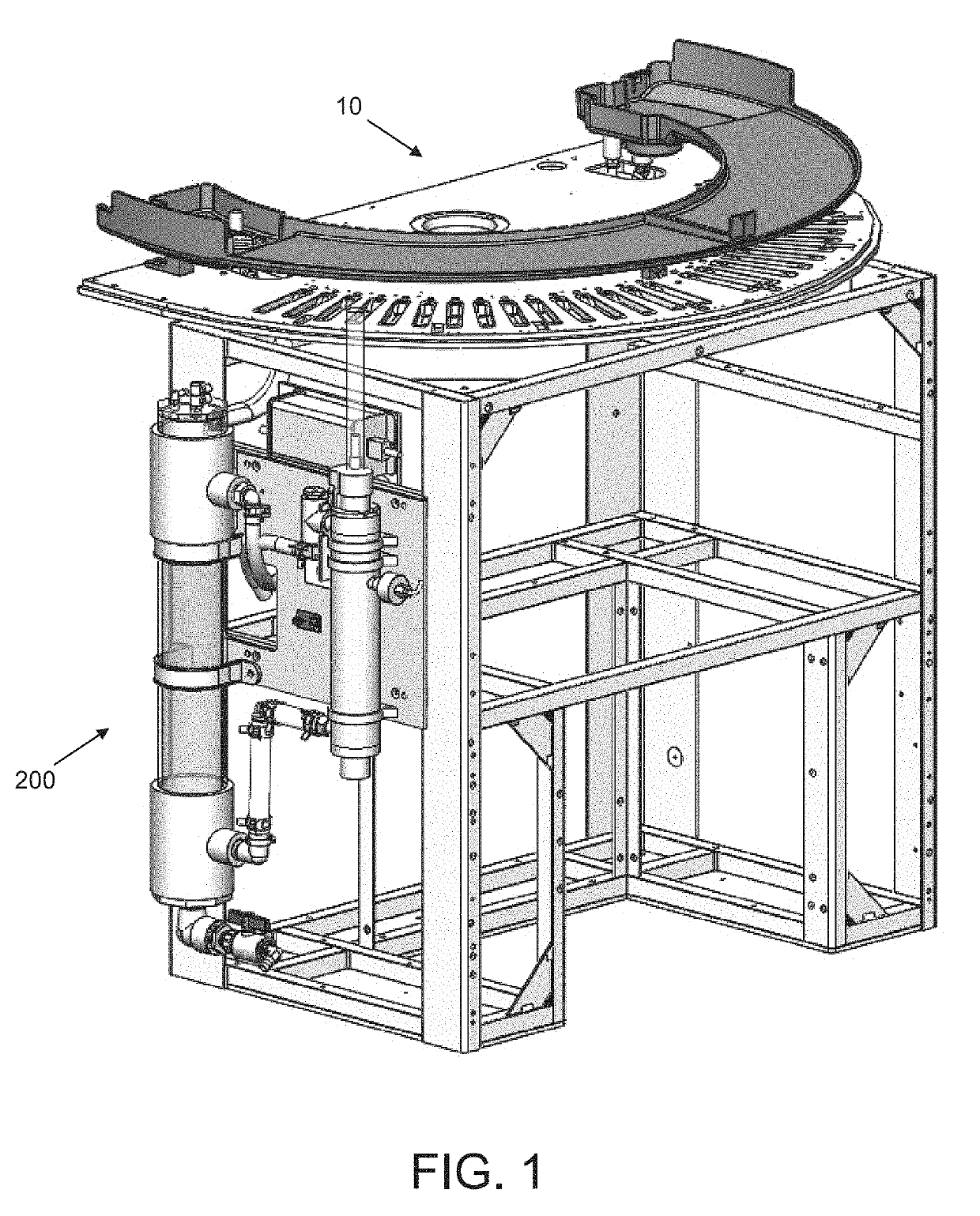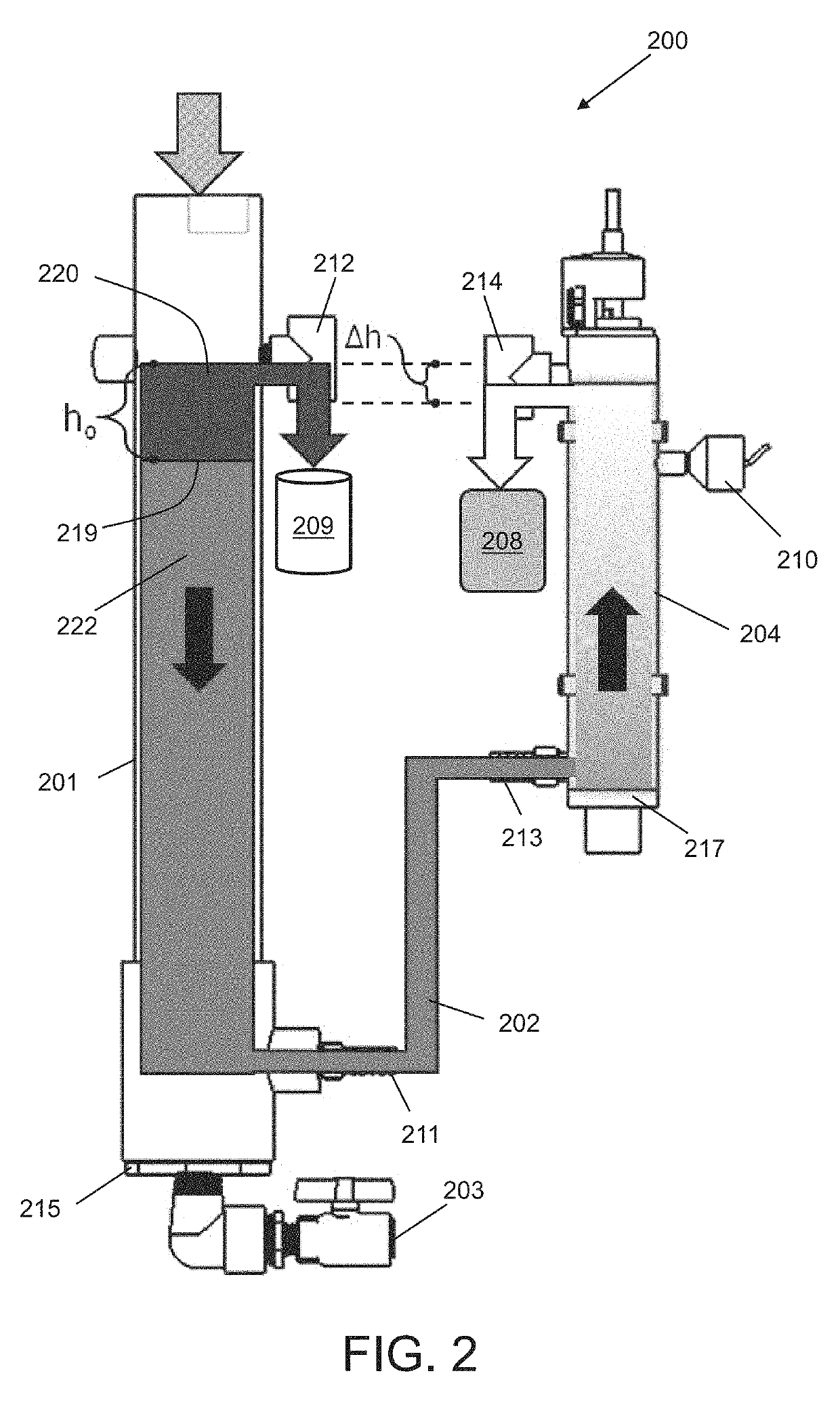Passive, gravity-driven system for treatment of an effluent in a diagnostic system
- Summary
- Abstract
- Description
- Claims
- Application Information
AI Technical Summary
Benefits of technology
Problems solved by technology
Method used
Image
Examples
examples
[0125]The following are non-limiting examples of the present invention. It is to be understood that said examples are provided for the purpose of demonstrating the present invention in practice, and is in no way intended to limit the invention. Equivalents or substitutes are within the scope of the invention.
System Dimensions
Embodiment 1
[0126]Liquid cover slip (LCS) has a specific gravity of 0.8. For a Δh=0.5 inches, then h0, which is the height of the oil layer, is calculated using the formula,
Δh=h0[1-ρ0ρw],
to be h0=2.5 inches, or 63.5 mm.
Embodiment 2
[0127]Referring to FIG. 2, the homogenizing reservoir (201) may be a cylindrical column having a 4,400 mm2 internal, cross-sectional surface area and height ranging from about 600 mm to 1000 mm. The radical generating reservoir (204) may be a cylindrical column having a tubular UV bulb co-axially disposed therein. Excluding the cross-sectional surface area of the tubular UV bulb, the remaining internal, cross-sectional surface area of ...
embodiment 1
Additional Embodiment 1
[0194]A passive, gravity-driven treatment system, operatively coupled to a diagnostic system, for treatment of a waste stream exiting the diagnostic system, wherein the gravity-driven treatment system comprises:[0195](a) a homogenizing reservoir fluidly connected to the diagnostic system for receiving a radical initiator and said waste stream exiting the diagnostic system at a given flow rate, wherein the waste stream comprises a set of fluid components having an aqueous component containing one or more target compounds, wherein a residence time of each fluid component in the homogenizing reservoir is sufficient for promoting an even mixing of the set of fluid components to form a homogenous target effluent at or near a first outlet of the homogenizing reservoir;[0196](b) a radical generating reservoir, wherein the target effluent is routed from the first outlet of the homogenizing reservoir to the radical generating reservoir via a channel, wherein gravity fa...
embodiment 2
Additional Embodiment 2
[0199]The system of additional embodiment 1, wherein the residence time is a function of the given flow rate and dimensions of the homogenizing reservoir.
PUM
 Login to View More
Login to View More Abstract
Description
Claims
Application Information
 Login to View More
Login to View More - R&D
- Intellectual Property
- Life Sciences
- Materials
- Tech Scout
- Unparalleled Data Quality
- Higher Quality Content
- 60% Fewer Hallucinations
Browse by: Latest US Patents, China's latest patents, Technical Efficacy Thesaurus, Application Domain, Technology Topic, Popular Technical Reports.
© 2025 PatSnap. All rights reserved.Legal|Privacy policy|Modern Slavery Act Transparency Statement|Sitemap|About US| Contact US: help@patsnap.com



